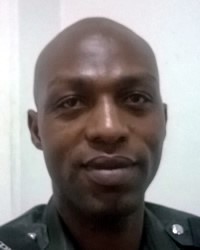Ga'anda, Mokar in Nigeria

Photo Source:
Anonymous
|
Send Joshua Project a map of this people group.
|
| People Name: | Ga'anda, Mokar |
| Country: | Nigeria |
| 10/40 Window: | Yes |
| Population: | 98,000 |
| World Population: | 98,000 |
| Primary Language: | Ga'anda |
| Primary Religion: | Christianity |
| Christian Adherents: | 83.00 % |
| Evangelicals: | 11.00 % |
| Scripture: | Portions |
| Ministry Resources: | Yes |
| Jesus Film: | Yes |
| Audio Recordings: | Yes |
| People Cluster: | Chadic |
| Affinity Bloc: | Sub-Saharan Peoples |
| Progress Level: |
|
Introduction / History
The Ga 'anda (or as locally called: Kaa-nda) are a group of Chadic speaking people living in North Eastern Nigeria. They are found in Gombi and Song Local government areas of Adamawa State. Their land borders are to Lala and Shani to the west, Yungur to the south, Guyaku and Hawul to the east and the North respectively. They are divided into four groups and each speaks a thinly and fairly differentiated dialect that distinguishes them from each other. The groups are Ga 'anda (pronounced Kaa-nda), Gabun –Kabin, Boga Poka and Dingai for Ti 'ngi.
The name Ga 'anda as anglicized is used to apply to the entire land and people as well as their language. Ga 'anda town has served the entire group as its traditional headquarters; the reason being that all the other groups migrated to their present location from the famous Mwakwar Mountain where it is believed to be their last stop after their migration from the east. The tribe's chief priest also resides there and when the colonial government became fully established, it also made Ga 'anda town administrative headquarters for the entire region. Ga 'anda existed as a chiefdom or priestdom since its migration for ages and was therefore an independent society. However, the British by its indirect rule system compromised that independence through its inclusion into the Fulani emirate system as a District.
The Ga 'anda believe they migrated from the 'east' (Ti-kaa-nan as they called it) to their present location along with their kinsmen, the Kanankuri or Poti. They were led by their sacred ceramic container the Ngum-Ngumi and they objectify this container as the force behind that migration. The east referred to is not in consonance with the semantic hypothesis which claims all human migrations to the Middle East. The east is just around the Lake Chad area of Borno State in Nigeria.
Where Are they Located?
The Ga 'anda are found in Gombi LGA of Adamawa State in Nigeria. Some speakers live in the Song, Gyuk, Mubi, and Biu (Borno State) LGAs.
What Are Their Lives Like?
Ga 'anda boys and girls must pass through some ordeal before they transition to adulthood. Girls are usually engaged to boys at a very early age, when they are young they pass through five stages of body markings or scarification covering the entire body. The last set of markings is usually followed by extensive celebration during Hombata, the Ga 'anda end of year and Harvest Festival held sometimes in November. By this time the girls would have been ready to proceed to their husbands' compound that must have built and decorated his house for the expected Perah (bride).
The boys at age 12 to 13 also pass through some ordeal they called Sabta, that is initiation of young boys to adulthood through intensive training and ordeal meant to produced hardened and resilient men for the community. Sabta is culminated by an elaborate feast and ceremony called Yohiwa. The Ga 'anda are patri-lineal.
What Are Their Beliefs?
The Ga 'anda believe in the existence of a supreme being whom they refer to as Farta, the same name they also apply to the sun. There was however no direct Farta worship, they worship Farta through some fetishes as intermediaries spread across the entire area. The most important fetish is called 'Yera' which literally means rain. Their chief priests Kutur 'Yera use the rain cult and his principal object of authority, he was therefore the most important person in the whole tribe. He was also in charge of wan-mirta spirit (Bringer of Death) to whom he makes sacrifices in April every year; there was also the Mbirthleng-nda which is the protector of the Ga 'anda people. The chief priest, the people believe, has the ability to cause rain, sacrifice and appease the Wan-Mirta spirit as well as use Mbirthleng-nda to protect the Ga 'anda people while Ngum-Ngumi serves as the overall guardian.
Missionary work started in Ga 'anda in 1940 and the gospel has witnessed a lot of transformation. The Gospel of Luke has been translated and published; other books of the New Testament are on-going, JESUS Film according Luke, produced and published and currently being utilized for the gospel work. Reading and writing Ga 'anda books have also been published and teachers are currently being trained.
Prayer Points
Prayers are needed for the continuing success in the translation project.
Prayers also needed for the efficient utilization of materials currently available.
Prayers needed for transformation of the entire Ga 'andaland.
Prayers needed for the sustenance of funding for all projects related to the gospel.